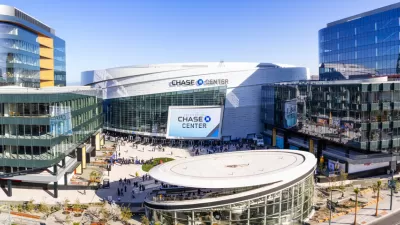A real estate co-op in Oakland is making waves with its first commercial acquisition.
In its heyday, Esther’s Orbit Room hosted Billie Holiday, Charlie Parker and John Coltrane, among other greats. The Oakland club — the cornerstone of a commercial corridor known as the “Harlem of the West” was owned and run by Texas native Esther Mabry, who had saved up her tips from waitressing to open, in 1950, the bar that would become the legendary jazz club.
If Mabry’s club was legendary, so was Mabry herself: 3rd-generation West Oaklander Noni Session remembers her for the annual scholarship she gave out to a C-grade student — indicative of caring for those that the system left behind.
Esther’s Orbit Room closed in 2010, and not long after, Mabry herself passed away. The building has been vacant ever since. But now Session is shepherding a new effort to revitalize the property as an anchor for the revitalization of the entire 7th Street commercial corridor. The plan is to re-open the space as an arts and culture hub, including a gallery space and a performance space, as well as space for incubating food businesses, with three apartment units above. In late March, as executive director of the East Bay Permanent Real Estate Cooperative, she reached an agreement to acquire the property for $1.45 million from the current private owners.
It will be the third property and first commercial property for East Bay Permanent Real Estate Cooperative, a unique real estate development entity with an ownership and governance structure that includes co-op residents, members of the surrounding community, staff of the co-op, and investors — with residents, community members and staff having priority over investors in making major decisions and setting policies.
And East Bay Permanent Real Estate Cooperative is now looking for new investor-owners to join its cause. It’s looking to raise $50 million in shares through what’s known as a direct public offering. At a price of $1,000 a share, investor-owners are entitled to an annual dividend of 1.5 percent. Unlike buying a share on the stock market, investors can’t sell their shares to others, only back to the co-op. And they have to leave their investment in the co-op for at least five years. Most importantly, no matter how many shares an investor purchases, each investor gets only one vote in the elections for board president and board treasurer.
The co-op has already secured the funding to acquire Esther’s Orbit Room, but the first $1.25 million from the offering will go to help renovate the building and bring it up to code. The co-op hopes the project will also provide a narrative to draw in investors to raise the remaining $48 million, and their investments will help finance projects that are already coming into the co-op’s pipeline. The co-op reviewed more than 35 potential projects in 2020.
FULL STORY: This Real Estate Co-Op is Looking for Investors Who Want to Put Community First

Study: Maui’s Plan to Convert Vacation Rentals to Long-Term Housing Could Cause Nearly $1 Billion Economic Loss
The plan would reduce visitor accommodation by 25,% resulting in 1,900 jobs lost.

North Texas Transit Leaders Tout Benefits of TOD for Growing Region
At a summit focused on transit-oriented development, policymakers discussed how North Texas’ expanded light rail system can serve as a tool for economic growth.

Why Should We Subsidize Public Transportation?
Many public transit agencies face financial stress due to rising costs, declining fare revenue, and declining subsidies. Transit advocates must provide a strong business case for increasing public transit funding.

A Visual Celebration of Manhattan’s Chinatown Elder Community, Through Food
Lanterns, cafeteria trays, and community connection take center stage in this stunning photo essay.

How to Make US Trains Faster
Changes to boarding platforms and a switch to electric trains could improve U.S. passenger rail service without the added cost of high-speed rail.

Columbia’s Revitalized ‘Loop’ Is a Hub for Local Entrepreneurs
A focus on small businesses is helping a commercial corridor in Columbia, Missouri thrive.
Urban Design for Planners 1: Software Tools
This six-course series explores essential urban design concepts using open source software and equips planners with the tools they need to participate fully in the urban design process.
Planning for Universal Design
Learn the tools for implementing Universal Design in planning regulations.
City of Santa Clarita
Ascent Environmental
Institute for Housing and Urban Development Studies (IHS)
City of Grandview
Harvard GSD Executive Education
Toledo-Lucas County Plan Commissions
Salt Lake City
NYU Wagner Graduate School of Public Service





























